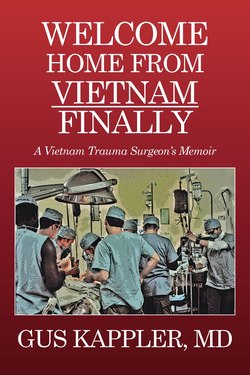Читать книгу Welcome Home From Vietnam, Finally - Gus Kappler MD - Страница 27
На сайте Литреса книга снята с продажи.
MONSOONS
ОглавлениеWhen I arrived on September 7, 1970, the sun was shining, and the temperature highs were in the seventies with low humidity. By mid-October, it began to rain day and night and persisted into mid-March.
Orderly room (at top left), the Sugiyami Highway (behind white posts), my first Hooch (on the top right)
When actual raindrops were not falling, a soupy, thick, misty, wet blanket descended on the 85th Evac. The temperature dropped into the mid to upper forties. It was constantly cold and wet. The mama sans were unfazed and efficiently cleaned our boots. They washed, dried and ironed our clothes, swept the hooch floor with colonial American-appearing straw brooms, and squatted. Vietnamese women did not sit.
The flow of casualties continued, as did our daily pursuits. How to stay dry? The army supplied us with cumbersome heavy rain suits, which became saunas with the least physical effort. The Farmer John rain pants were discarded. The rubber boots were occasionally useful. The hooded jacket worked well.
Colonel Sugiyama, our commanding officer (CO), even directed the construction of a series of elevated pathways using PSP supported on wooden rocket boxes. The appropriately named Sugiyama Highway did effectively aid us in negotiating the deep mud and small lakes created by the constant rains.
During this time, there was an escalated incidence of immersion foot, often called trench foot, for the trooper’s feet were constantly wet in a cool environment. The combination of fungal and bacterial skin and subcutaneous infections were painful, debilitating, and often required hospitalization for intravenous antifungal and antibiotic treatment and intensive foot care.
Immersion Foot
